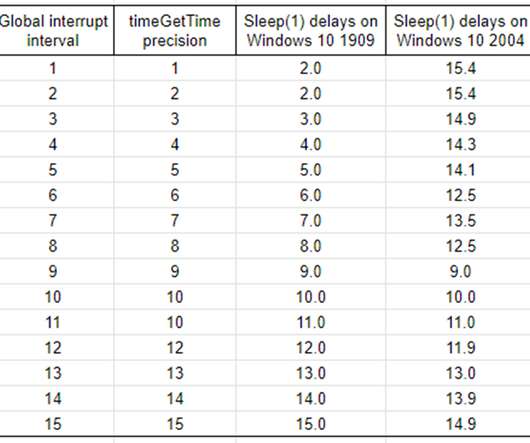Windows Timer Resolution: The Great Rule Change
Randon ASCII
OCTOBER 4, 2020
The behavior of the Windows scheduler changed significantly in Windows 10 2004, in a way that will break a few applications, and there appears to have been no announcement, and the documentation has not been updated. First, a bit of operating-system design context. Timer interrupts and their raison d’être. That’s crazy!













Let's personalize your content